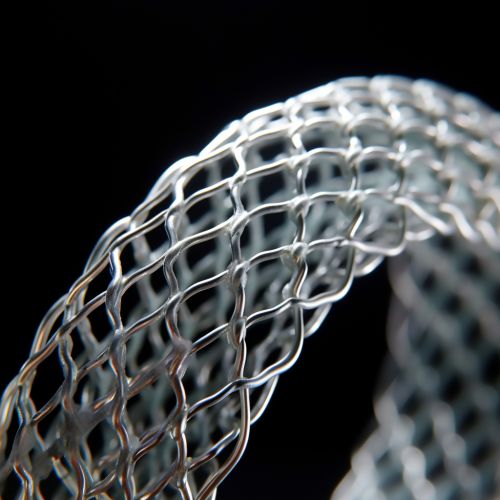Stent
Overview
A stent is a small, flexible tube made of plastic or wire mesh, that is used to treat a variety of medical conditions. It is typically used to open up a blocked or narrowed blood vessel, such as an artery, or to keep a body passage open. Stents are commonly used in the treatment of coronary artery disease (CAD), peripheral artery disease (PAD), and in certain cases of kidney disease. They can also be used in the treatment of conditions such as bile duct obstruction, esophageal strictures, and tracheal stenosis.


History
The concept of using a stent to open up a blocked or narrowed blood vessel dates back to the late 19th century. However, the first successful use of a stent in a human patient did not occur until the 1960s, when a team of doctors at the Mayo Clinic in the United States used a stent to treat a patient with a blocked bile duct. Since then, the use of stents has become a common procedure in the treatment of a variety of medical conditions.
Types of Stents
There are several different types of stents, each designed for use in a specific part of the body or for a specific condition. These include:
- Coronary stents: These are used to treat blockages in the coronary arteries, which supply blood to the heart. They are typically made of metal mesh and are designed to be expandable.
- Peripheral stents: These are used to treat blockages in the peripheral arteries, which are the blood vessels that supply blood to the arms and legs.
- Biliary stents: These are used to treat blockages in the bile ducts, which carry bile from the liver to the small intestine.
- Esophageal stents: These are used to treat blockages or narrowings in the esophagus, which is the tube that carries food from the mouth to the stomach.
- Ureteral stents: These are used to treat blockages in the ureters, which are the tubes that carry urine from the kidneys to the bladder.
Procedure
The procedure to insert a stent is typically performed by a specialist doctor known as an interventional radiologist or a cardiologist. The procedure is usually done under local anesthesia and sedation, although general anesthesia may be used in some cases.
The doctor will first insert a thin, flexible tube called a catheter into a blood vessel, usually in the groin or arm. The catheter is then guided through the blood vessel to the site of the blockage or narrowing. Once the catheter is in place, a balloon at the end of the catheter is inflated to open up the blockage or narrowing. The stent is then placed over the balloon and expanded to fit the size of the blood vessel. Once the stent is in place, the balloon is deflated and removed, leaving the stent in place to keep the blood vessel open.
Risks and Complications
As with any medical procedure, there are potential risks and complications associated with the use of stents. These can include:
- Blood clots: There is a risk that a blood clot could form on the surface of the stent, which could lead to a heart attack or stroke.
- Restenosis: This is when the blood vessel becomes narrowed again after the stent has been placed. This can occur due to the growth of scar tissue around the stent.
- Stent migration: This is when the stent moves from its original position. This can lead to complications such as blockage of the blood vessel.
- Infection: There is a risk of infection at the site where the catheter was inserted.
Future Developments
Research is ongoing into the development of new types of stents and improvements to existing ones. This includes the development of drug-eluting stents, which release medication to help prevent the formation of blood clots and the growth of scar tissue. There is also research into the use of bioresorbable stents, which are designed to dissolve over time, eliminating the need for a permanent implant.
See Also
- Coronary Artery Disease - Peripheral Artery Disease - Biliary Obstruction - Esophageal Strictures - Ureteral Obstruction
